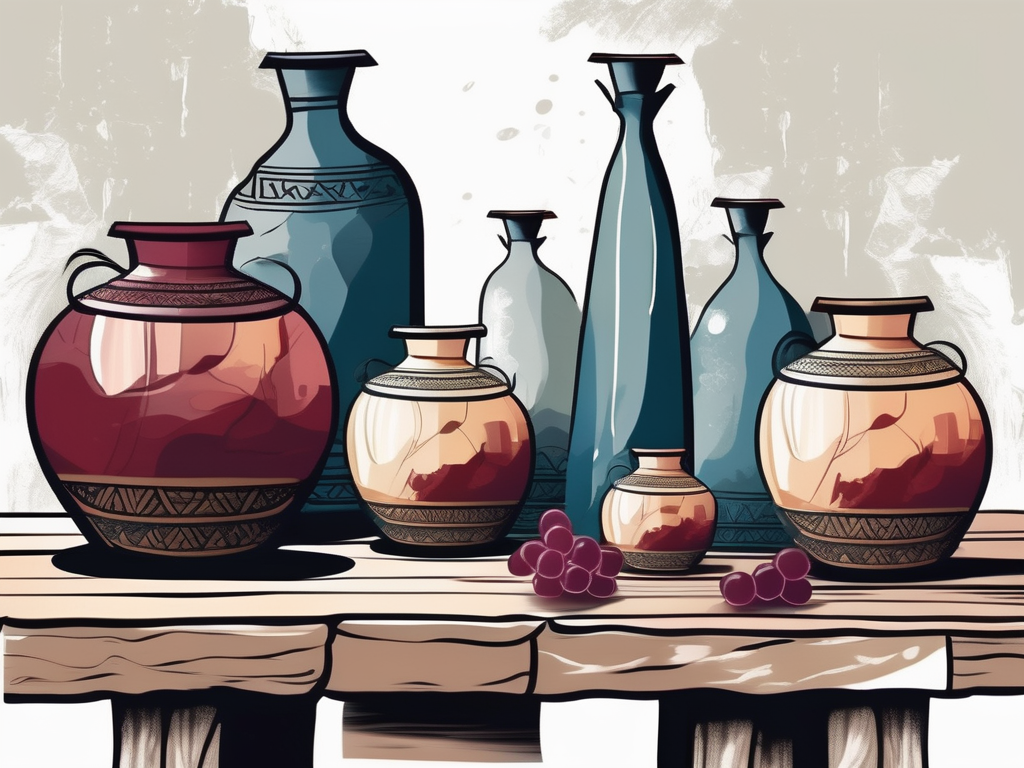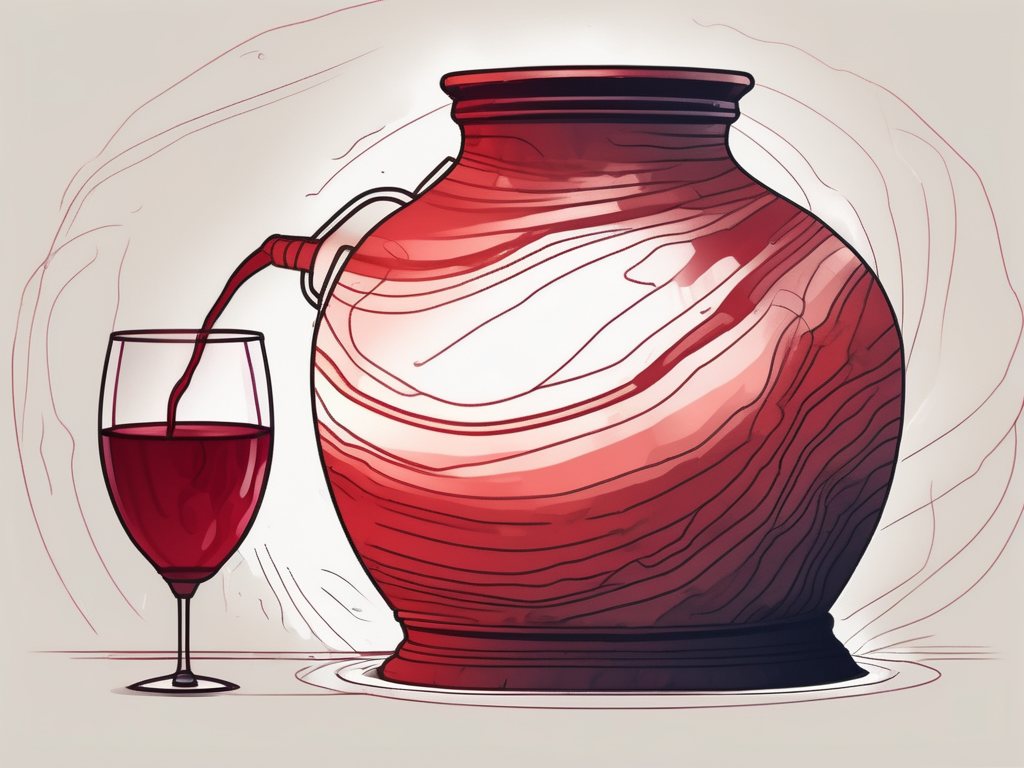Imagine attending a wedding where the most ordinary of beverages transforms into a rich and flavorful wine. Such was the astounding miracle attributed to Jesus – the very act that marked the beginning of his public ministry. The story of Jesus turning water into wine is both captivating and thought-provoking, inviting us to explore its various dimensions. From the theological significance to the scientific perspectives, and from its cultural impact to the controversies and debates surrounding it, this miracle continues to intrigue and inspire. Let’s dive deeper into this tale and uncover the depths of its meaning.
Understanding the Miracle: Water into Wine
At the heart of this fascinating account lies the miracle itself – the transformation of water into wine. Although miracles are often associated with supernatural events, this particular miracle holds a unique place among Jesus’ works. Let us begin by examining the setting in which the miracle took place: the wedding at Cana.
The Setting: Wedding at Cana
The wedding at Cana serves as the backdrop for this extraordinary display of Jesus’ power. In ancient Jewish culture, weddings were grand celebrations that lasted for several days. They were joyous occasions filled with music, dancing, and feasting. The air was filled with excitement and anticipation as family and friends gathered to celebrate the union of two individuals.
It was during one such festive occasion that Jesus performed this remarkable act, forever etching the event in history. The wedding venue was adorned with colorful flowers and elegant decorations. The aroma of delicious food wafted through the air, enticing the guests. Laughter and conversation filled the space, creating a vibrant and joyful atmosphere.
As the celebration unfolded, the hosts faced a predicament – they ran out of wine. This was a significant social faux pas and could potentially bring shame upon the family. Little did they know that this moment would become the stage for a miraculous intervention.
The Role of Mary, Jesus’ Mother
Intriguingly, Jesus’ mother, Mary, played a significant role in this miracle. Mary, a woman of deep faith and devotion, was aware of her son’s extraordinary abilities. When she noticed the host’s dilemma, she approached Jesus and informed him of the dire situation. Mary’s unwavering belief in her son’s power and compassion prompted her to seek his intervention.
Jesus, recognizing his mother’s faith and the opportunity to reveal his divine nature, responded to her plea. He assured her that his time had not yet come, but Mary, with complete trust, turned to the servants and said, “Do whatever he tells you.” Her words carried an air of confidence, as if she knew that something extraordinary was about to happen.
With Mary’s faith and trust as a catalyst, Jesus instructed the servants to fill six stone jars with water. These jars, used for ceremonial washing, were large and could hold up to twenty to thirty gallons each. The servants, curious and expectant, obeyed Jesus’ command, filling the jars to the brim.
The Significance of the First Miracle
As Jesus’ very first miracle, the turning of water into wine holds profound symbolism. It sets the tone for the rest of his ministry, portraying Jesus as the bringer of abundant grace and joy. This act of transforming ordinary water into the finest wine not only saved the hosts from embarrassment but also brought delight and awe to the guests.
Furthermore, this miracle emphasizes Jesus’ divinity, establishing him as a figure with authority over the elements and the ability to transform the ordinary into the extraordinary. It foreshadows the ultimate act of redemption that Jesus would accomplish through his sacrificial death and resurrection.
The miracle at the wedding of Cana is a testament to Jesus’ compassion, power, and ability to bring joy in unexpected ways. It invites us to reflect on the abundance of God’s grace and the transformative power of Jesus’ presence in our lives. Just as water was turned into wine, Jesus can turn our sorrows into joy, our despair into hope, and our ordinary existence into something extraordinary.
Theological Interpretations of the Miracle
Beyond the fascinating narrative, the miracle of turning water into wine carries profound theological implications. Let us explore some of these interpretations that shed light on the deeper meaning of this remarkable event.
Symbolism of Wine in Biblical Times
Wine possesses rich symbolism in biblical times, representing joy, celebration, and abundance. In turning water into wine, Jesus not only provided a solution to a practical problem but also symbolized the arrival of spiritual fulfillment and the bounty of God’s grace in the lives of believers.
In biblical times, wine played a significant role in various religious rituals and ceremonies. It was seen as a symbol of God’s blessings and favor. The transformation of water into wine at the wedding in Cana demonstrated Jesus’ ability to bring forth divine blessings and abundance in the lives of those who follow him.
Furthermore, wine was often associated with the concept of joy and celebration. By performing this miracle, Jesus not only provided physical sustenance but also brought joy and celebration to the wedding feast. This act emphasized the importance of joy and celebration in the lives of believers and highlighted Jesus’ role as the source of true joy.
The Miracle as a Sign of Jesus’ Divine Authority
By manifesting his supernatural power through this miracle, Jesus established his divine authority. The ability to transform one substance into another signified his sovereignty over the natural order of things and pointed to his identity as the Son of God.
In the Old Testament, only God had the power to perform such miraculous acts. By turning water into wine, Jesus demonstrated his divine authority and power, affirming his identity as the Messiah. This miracle served as a sign to those present that Jesus was not just an ordinary man but the Son of God, with the ability to perform extraordinary acts.
Additionally, this miracle foreshadowed the greater miracles that Jesus would perform during his ministry, such as healing the sick, raising the dead, and ultimately, his own resurrection. It served as a preview of the extraordinary power that Jesus possessed as the Son of God.
The Miracle and the New Covenant
Some theologians interpret the miracle as a foreshadowing of the new covenant that Jesus would establish through his sacrificial death and resurrection. Just as the water in the jars was transformed into wine, Jesus’ blood would bring spiritual renewal and redemption to humanity, surpassing the limitations of the old covenant.
In the Old Testament, wine was often used as a symbol of blood, representing the sacrificial system and the forgiveness of sins. The transformation of water into wine at the wedding feast symbolized the transition from the old covenant, which relied on animal sacrifices, to the new covenant, which would be sealed with Jesus’ own blood.
Through his sacrificial death and resurrection, Jesus would bring about a new era of spiritual renewal and redemption. The miracle of turning water into wine served as a powerful symbol of this transformative work, illustrating the abundance of God’s grace and the new life that believers would experience through their faith in Jesus.
Scientific Perspectives on the Miracle
While faith and theology embrace the miraculous, skeptics and rationalists seek scientific explanations. Let’s delve into some of the scientific perspectives concerning the turning of water into wine.
The Chemistry of Turning Water into Wine
From a scientific standpoint, transforming water into wine involves altering the chemical composition of the liquid. While no natural process can instantaneously convert water into wine, some theories propose that Jesus may have utilized highly concentrated extracts or fermentation methods to achieve a rapid transformation.
Chemists have long been fascinated by the process of fermentation, which is responsible for the conversion of sugar into alcohol. In the case of turning water into wine, it is possible that Jesus employed a unique fermentation technique that accelerated the process. This could have involved the addition of specific enzymes or microorganisms that expedited the conversion of sugars present in the water into alcohol.
Furthermore, it is worth considering the possibility of Jesus using concentrated extracts derived from grapes or other fruits. By adding these extracts to the water, the flavor and color of the liquid could have been transformed, giving it the appearance and taste of wine. This would not involve an instantaneous transformation, but rather a rapid infusion of the desired qualities.
The Miracle from a Rationalist’s Viewpoint
Rationalists view the miracle as a metaphorical account rather than a literal transformation. They suggest that Jesus’ actions symbolically represented a shift in the atmosphere and mindset, bringing about a remarkable transformation in the mood and mindset of the wedding party.
According to this perspective, the turning of water into wine serves as a powerful symbol of Jesus’ ability to bring joy and abundance into people’s lives. It is seen as a metaphorical representation of his transformative teachings and the positive impact they can have on individuals and communities.
From a rationalist viewpoint, the miracle at the wedding in Cana is not about the physical transformation of water into wine, but rather about the spiritual and emotional transformation that Jesus’ presence and teachings can bring about. It is interpreted as a demonstration of his ability to uplift and inspire, turning ordinary moments into extraordinary ones.
Furthermore, rationalists argue that the story of the miracle may have been embellished over time, as is often the case with ancient texts. They suggest that the original account may have been a simple anecdote about Jesus’ ability to bring joy to a wedding celebration, which later evolved into a miraculous tale of water being turned into wine.
In conclusion, while the scientific perspectives on the turning of water into wine offer intriguing possibilities, the miracle continues to be a subject of debate and interpretation. Whether viewed through the lens of chemistry or rationality, the story serves as a powerful symbol of transformation and the potential for joy and abundance in our lives.
Cultural Impact of the Water into Wine Miracle
Over the centuries, the miracle of turning water into wine has left an indelible mark on various aspects of human culture, inspiring awe, and artistic expression.
The Miracle in Art and Literature
Countless artists and writers have depicted the scene of Jesus turning water into wine in their works, capturing the awe-inspiring nature of this supernatural event. These artistic interpretations continue to resonate with audiences, showcasing the cultural impact and enduring fascination surrounding the miracle.
The Miracle’s Influence on Christian Traditions
The water into wine miracle holds deep significance in Christian traditions and practices. It is often referenced as a reminder of Jesus’ transformative power and is associated with the concept of divine intervention in everyday life. The lasting impact of this miracle continually inspires believers and strengthens their faith.
Controversies and Debates Surrounding the Miracle
As with any extraordinary event, the miracle of water into wine has not been exempt from controversies and debates. Let us explore some contrasting viewpoints that have emerged over the years.
Skepticism and Faith: Diverse Views on the Miracle
While many embrace the miracle as a testament to Jesus’ divine power, others approach it with skepticism. Some argue that the accounts of this miracle are metaphorical or exaggerated, while others maintain unwavering faith in its historical accuracy. This diversity of perspectives fosters healthy debates and enriches our understanding of faith and belief.
The Miracle and the Question of Historical Accuracy
Historical accuracy has been a subject of scrutiny when it comes to the water into wine miracle. Critics question the reliability of the accounts, raising doubts about the accuracy of the details and urging a more critical examination of the narrative. The ongoing discussion highlights the complexities of reconciling faith with historical inquiry.
In conclusion, the fascinating account of Jesus turning water into wine encompasses spiritual, scientific, and cultural dimensions that have captivated humanity for centuries. This miracle conveys deep theological meaning and serves as a potent symbol of Jesus’ divine authority and the arrival of God’s abundant grace. Its impact on art, literature, and Christian traditions continues to inspire awe and contemplation. While skeptics and debates persist, the enduring fascination surrounding this miracle reminds us of the power of faith, interpretation, and the quest for truth. Whether one approaches the water into wine miracle with skepticism or unwavering belief, its enduring allure invites us to ponder the extraordinary in the ordinary and embrace the possibility of the miraculous in our lives.












